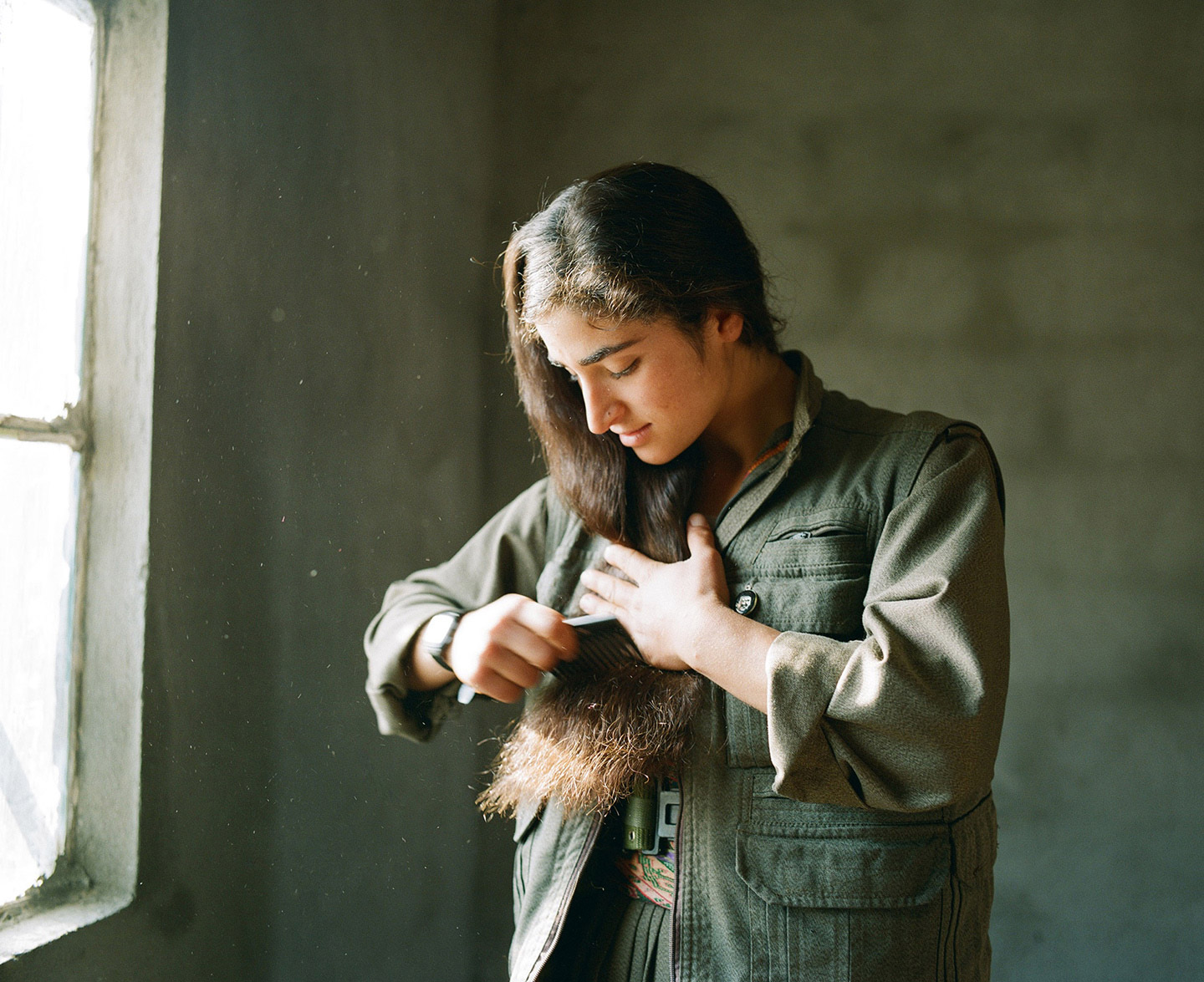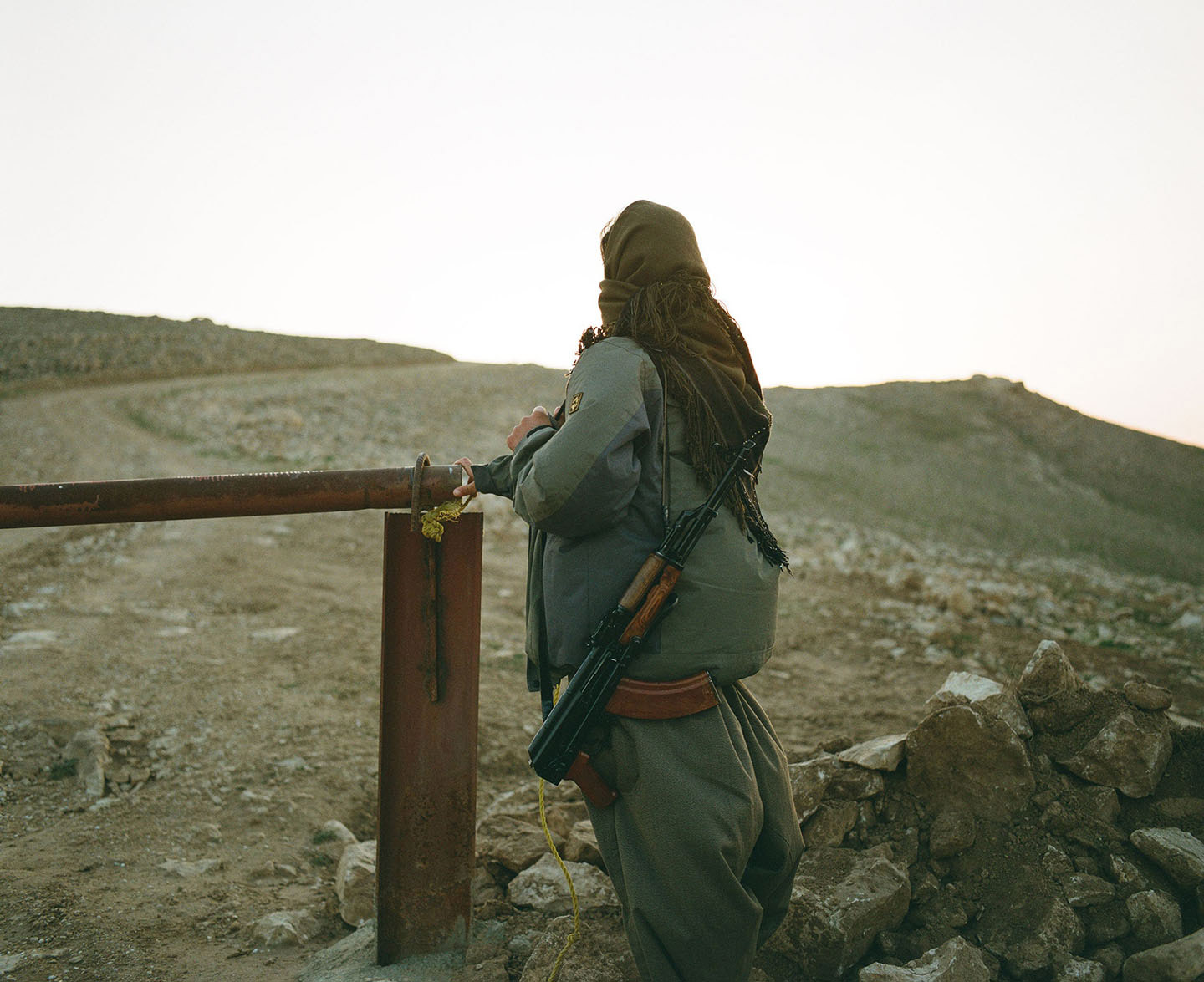Zaynê Akyol
in Caplan
EXHIBIT
Rojekê, un jour
(Rojekê, One Day)
Rest stop | 400 Boulevard Perron Ouest | Caplan
Zaynê Akyol, Sainte-Madeleine, Québec
A graduate of the École des médias at the Université du Québec à Montréal, Zaynê Akyol received the award for most promising documentarist, at the conclusion of her bachelor’s degree, from the René-Malo Chair there, which is associated with the National Film Board of Canada.
In 2010 she directed the medium-length documentary Iki bulut arasinda, Sous deux ciels (Iki bulut arasinda, Under Two Skies), which was honored at the Rendez-vous du cinéma québécois. Zaynê Akyol also finished a master’s degree with a cinema concentration, basing her research on relational and creative issues in documentaries. She went on to direct her first feature-length documentary, Gulîstan, Terre de roses (Gulistan, Land of Roses), which paints a human portrait of the Kurd guerillas at war against Daech (the Islamic State). Finished in 2016, the film has already drawn notice at a number of international festivals.
Zaynê Akyol’s interest in the image led her finally to photography. At the moment she is preparing a photobook on the issue of women fighting in Rojava, Syria.
EXHIBIT AT RENCONTRES
Rojekê, un jour
(Rojekê, One Day)
Since the collapse of the Ottoman Empire and the birth of the Republic of Turkey, in 1923, Kurds have been ostracized and treated as second-class citizens in whichever country they find themselves. The Treaty of Lausanne divided the Kurds up among Turkey (20 million), Iran (8 million), Iraq (6 million) and Syria (2 million). A policy of assimilation and politics of fear have prevailed since that agreement between the Allies of the First World War and the modern Turkey of Mustafa Kemal Atatürk. The Kurds, the biggest nation in the world without a country, early on ran up against the territorial, economic and religious questions that stood in the way of their recognition. Abandoned by the great powers, they found themselves at the mercy of various regimes, who would sometimes use them, at other times prohibit their language and deny their ethnic existence. Since that period, a number of revolutionary movements have come to life, but none has resisted as long as has the Kurdistan Workers’ Party (PKK), founded in 1978 and armed in 1984.
Today, in Syria and Iraq, Daech is attempting to break through Kurdish lines, but is coming up against combatants from the PKK (in Iraq, in the autonomous region of Kurdistan) and from the YPG (unofficial branch of the PKK in Syria). The Kurds at this point, now more than ever, play a crucial role on the world’s geopolitical chessboard. The war against Daech, in which they are the main players on the ground, will possibly lead to recognition for this forgotten people.
Rojekê, Un jour is a photo exhibit on the day-to-day lives of Kurd guerillas fighting for their people, mistreated for close to 100 years. These pictures were taken in the Qandil Mountains (the PKK headquarters) as well as in the towns of Makhmur and Kirkuk. The goal of these wartime images was to intercept loaded looks that exist for only an instant, to immortalize them by capturing their emotion. And then there is the question of providing these guerillas the opportunity to tell their stories by sharing with onlookers part of their daily lives punctuated by soldiers’ activities. Those spectators can thus gain personal access to revolutionary men and women fighting for a democratic ideal, a chance to take hold of them in a certain intimacy. Rojekê, Un jour is an exhibition that tells the story of the war by way of human faces.



